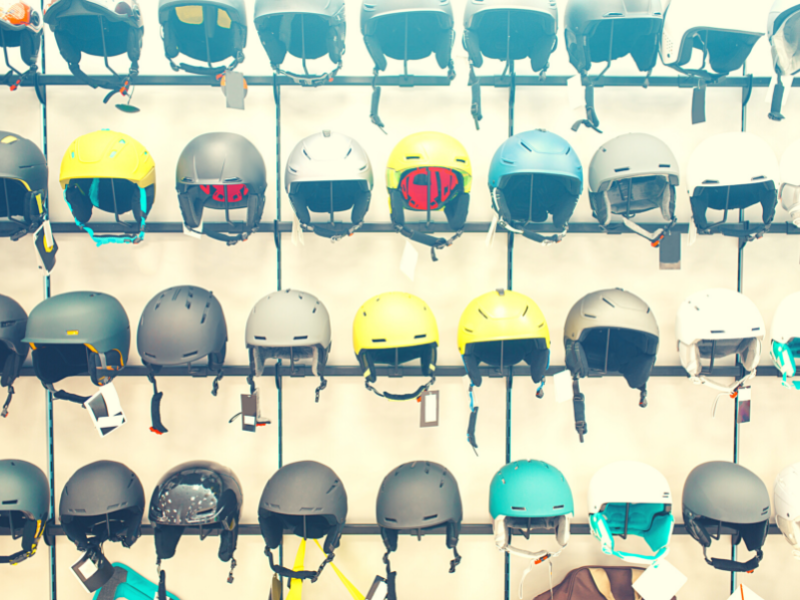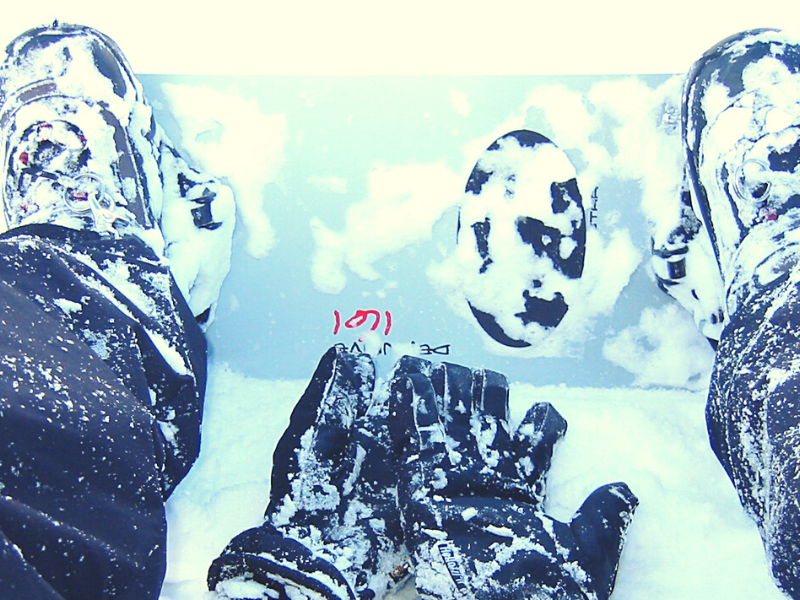Is It Compulsory To Wear Ski Helmets? If Not, Should You?
Just a decade or so ago, the only thing atop most skiers' heads was a beanie. But things have completely changed, and the only thing on top of most heads on the slopes are helmets. It's to the point where it makes you question if it's compulsory to wear ski helmets.
Ski helmets are not required in most cases, with a few exceptions for when they must be worn in non-competitive situations. This rule is most often applied to children, but rarely to adults. A few regions that require children to wear ski helmets include New Jersey, Italy, and parts of Austria.
Some areas do require adult skiers and snowboarders to wear helmets as well, such as the entire province of Nova Scotia as well as any employee of Vail Resorts are required to wear helmets. Let's take a closer look at the state of ski helmets today, where it's compulsory, and the challenges ahead.
The Current State of Ski Helmets
There's no denying it, ski helmets have become incredibly popular in recent years. This rise in popularity can be attributed to a few different factors.
The most obvious is that people are simply becoming more safety-conscious. With advances in technology, helmets are now lighter and more comfortable than ever before. They also do a much better job of protecting your head in the event of a fall.
Additionally, in the wake of high-profile deaths and injuries, the need for helmets has become more apparent. Celebrities like Michael Kennedy and Sonny Bono, who both died in skiing accidents, have helped to raise awareness of the importance of wearing a helmet.
The increased popularity of extreme snow sports and its celebrity athletes has also played a role.
As people push the boundaries of what's possible on the slopes, the need for helmets has increased, and seeing Lindsey Vonn, Bode Miller, or Shaun White wearing a helmet has reinforced the acceptance and importance of helmets, particularly with younger generations.
So then, is everyone wearing a helmet on the slopes?
Do All Skiers and Riders Wear Helmets?
Not all skiers and riders wear helmets, but the vast majority of them do. In the 2021/22 season, NSAA estimated that 90% of skiers and riders wore helmets. Wearing a helmet has become a social norm. In many cases, not wearing a helmet can make you stand out negatively.
The most significant part of this statistic is its rate of growth. In the 2002/03 season, around 25% of all skiers and riders wore helmets. Incredibly, in just twenty short years the adoption of helmets grew by 65%.
What do these percentages look like as actual population numbers though?
How Many Skiers And Snowboarders Wear Helmets?
Of the approximately 10.5 million active US skiers and snowboarders in the 2020/21 season, approximately 9.1 million wore helmets. This marks nearly a 4% growth compared to the 2018/19 season, which predates Covid 19.
Although the global number isn't readily available, it's safe to say that adoption worldwide is at least similar to the US usage of helmets for skiing and snowboarding.
How Many Children Wear Ski Helmets?
In the 2021/22 ski season, the NSAA reported that nearly 100% of children under the age of 9 wore helmets skiing or riding, and close to 95% of children aged 17 or younger wore helmets. Specific to the under 9 age group, the report further points out that twenty years ago, only 63% of the segment wore helmets.
It's also worth noting that the NSAA's report makes a point of detailing that these statistics are not achieved because of compulsory helmet laws and rules, signaling its success is mostly driven by choice.
Compulsory Helmet Usage
In general, most helmet wear is voluntary. However, there are a few notable exceptions where ski resorts or government bodies have made it mandatory to wear helmets.
Governing Bodies With Compulsory Ski Helmet Laws
A few countries have made it mandatory to wear helmets while skiing for those under the age of 18. These include Slovenia, Italy, and parts of Austria. In these cases, the law typically applies to children.
In North America, the most notable example is the Canadian province of Nova Scotia. As of 2011, all skiers and snowboarders in Nova Scotia, regardless of their age, must wear a helmet while on the slopes.
Additionally, in the US state of New Jersey, any person under the age of 18 is required to wear a helmet on the slopes.
Governmental fines for ignoring the compulsory ski helmet rules can range quite a bit. In New Jersey, a first-time offense comes with a $25 fine, whereas in South Tyrol, Italy, a first-time fine would cost close to $250. A repeat fine in South Tyrol costs nearly $1,000!
Ski Resorts With Compulsory Ski Helmet Rules
A large number of ski resorts also have compulsory helmet laws for minors. The most notable resort system with compulsory helmet rules would certainly be Vail Ski Resort.
Famous for its namesake and location, Vail Resorts is the ownership group that runs 37 mountain resorts across three countries (US, Canada, and Australia - yes, Australia), including some of the most recognized mountains in North America. All 37 resorts require minors to wear helmets.
Vail Resorts 9 most popular mountain resorts include:
- Vail Ski Resort Colorado, US
- Beaver Creek Colorado, US
- Whistler Blackcomb British Columbia, CA
- Breckenridge Colorado, US
- Keystone Colorado, US
- Park City Utah, US
- Heavenly California, US
- Northstar California, US
- Kirkwood California, US
In addition to minors, Vail Resorts also requires certain employees to wear helmets. Boyne Resorts, which operates 10 mountain resorts, has a similar rule in place.
Top 3 Challenges Facing Ski Helmet Use
Based on the NSAA data, 10% of US skiers and riders still need convincing to wear a helmet. And while it may be nearly impossible to convince them to wear helmets, there are three challenges ahead for getting more people to wear helmets on the slopes.
- Compulsory Legislation and Resort Rules
- Campaigning to 18-34-Year-Olds
- Wearing Ski and Snowboard Helmets Correctly
1. Compulsory Ski Helmet Legislation and Resort Rules
Every year for the past decade, a piece of legislation goes in front of state bodies to vote on compulsory ski helmets in several winter sports states.
In 2018, New York passed a law that all skiers and snowboarders under 14 years of age are required to wear a helmet when hitting the NY slopes. This is after the same bill was shot down just two years prior.
Other ski states have already or are in line to propose similar bills that also start with minors.
In 2012, Vermont had helmet legislation for employees of resorts proposed, but a state ski organization, as well as Sugarbush, voiced their detractions to the law.
So while Vail Resorts and other mountain resort organizations are in favor of setting rules for riders and employees alike, not all resorts and states are in support.
Even with the glaringly obvious reasons to wear a helmet from a health and safety perspective, as well as the societal standards, without some sort of mandate from a governing body or resort, it will be difficult to get all skiers and snowboarders to wear helmets.
2. Campaigning Ski Helmet Usage With 18-34-Year-Olds
NSAA has successfully supported the adoption of ski helmets since its inception - it's by far the biggest reason for the success to date. Thanks to its successful marketing campaign "Lids on Kids" which debuted in 2002.
NSAA knows that the best way to get people to wear helmets is to start young. But with 100% adoption for under 9 and 95% adoption for children under the age of 17, there's not as much work to do with the under-18 segment.
So NSAA has stated that its next campaign is focused on the youngest segment of adults - the coveted 18-34 demographic.
The work to date seems to be working: according to NSAA, approximately 86% of young adults (18-34) report wearing helmets while skiing or riding. However, there is still room for improvement, especially among male skiers and riders.
But, even though this particular segment directly represents nearly 23% of the total US population, it also indirectly affects nearly 20% of the US population under the age of 14.
18-34 is the vast majority of young parents, where the average maternal age at birth is now 30 years old.
In other words, focusing on the 18-34 segment influences an entire segment itself, and its children.
So NSAA is working with associations, resorts, and government bodies to support its campaign for helmet usage among this age group.
3. Skiers and Snowboarders Aren't Wearing Helmets Correctly
Two decades ago, the helmet crisis revolved around people not wearing them. Today, it's all about wearing them correctly, and unfortunately, many people don't know how to wear them properly.
A ski helmet that doesn’t fit correctly can be just as dangerous, or even more dangerous than if you weren’t wearing one at all - as it can create false confidence.
Thankfully, only three steps are required to be able to tell if your helmet fits correctly or not.
This is the next frontier of the helmet crusade, and surely one that will be part of the educational process with NSAA's work with 18-34-year-olds.
Helmets Aren't Compulsory, But They Might As Well Be
In the end, whether or not you wear a helmet while skiing or riding is generally up to you if you're over the age of 18. You typically won't face a law or resort rule that requires you to wear a helmet.
But with 90% of skiers and snowboarders wearing helmets, you're going to be the odd one out. And helmets are way more stylish than they used to be - plus you'll stay warmer and make it easier to keep your goggles on your face when you have one on.
So really, what do you have to lose by wearing a ski helmet?




